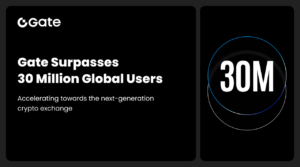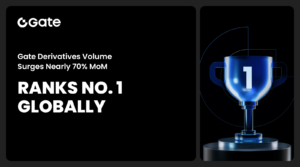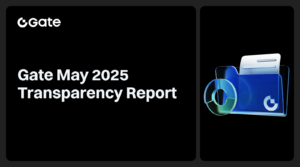Gajesh Naik, 13, manages a fortune in DeFi – Cointelegraph Magazine


At 13, it is hard to believe that anyone can understand the potential — and responsibility and danger — of holding private keys to half a million dollars while living life as a normal seventh-grader in India.What makes the case of Gajesh Naik, the 13-year-old decentralized finance (DeFi) wunderkind from Goa, so unique is that while he can design a DeFi protocol able to accept $1 million of investors’ money, he is too young to sign a legal contract or be held liable for any loss. Would you trust your money to an unproven teenage developer with just half a year’s programming experience on solidity?Time fliesNaik started out with a YouTube channel, teaching people to code, before switching to smart contract consulting. Today, his DeFi protocol, PolyGaj, manages nearly $1 million.Given his age, it’s fascinating to see how he views time, and instead of years or quarters, Naik speaks in months, “I was freelancing for three months, and launched two projects.”While many would consider a three-month block of blockchain consulting experience as little more than an internship, Naik describes it in a way that makes it sound more like a career phase, as if it would be more appropriate for the statement of three to refer to years instead of months. Gajesh Naik, the 13-year-old DeFi wunderkind in an early YouTube video.This is to be expected, seeing as a younger person will naturally perceive time as happening more slowly — a year can be the equivalent of up to 20% of a 10-year-old’s “conscious” life, the equivalent of six years for someone aged 30, or a decade for a 50-year-old. What’s more, the speed at which information is processed slows down with age, meaning that the ability for younger people to absorb and utilize new information is much higher. As such, Naik may be correct to see his three months of consulting as a foundation of his career.With what we will call “plenty” of industry experience, relatively speaking, Naik graduated to launching his own project, PolyGaj, which is based on a similar platform on the Binance Smart Chain called Goose Finance. The eponymous elephant-themed DeFi platform allows users to trade and farm tokens, namely PolyGaj (GAJ) and StableGaj (SGAJ). There is also the potential to place coins in pools promising as much as 34% APR on Wrapped Bitcoin (wBTC) and 62% APR on Tether (USDT). StableGaj is not Stablecoin— gajesh.eth🌋 (@robogajesh) June 26, 2021 Also worth mentioning are Naik’s “Elephant Punk” nonfungible tokens (NFT), which are on sale for about $25. As of the time of writing, the platform has about $900,000 of investor money locked across its farms and pools, and Naik’s address, which “owns” the platform, holds about $500,000 worth of GajCoin, making Naik extremely wealthy in both relative and absolute terms.From student to teacherNaik got into coding in early 2016 — at the age of seven — starting with Drag and Drop when he attended a two-week coding bootcamp in his native Goa on the west coast of India. In early 2017, he dove into Scratch, a programming language designed for kids, more deeply before spending the second half of the year learning C and C++. The big year was 2018 when he “learned Java, HTML, CSS and JavaScript,” started a YouTube channel to teach coding to others, and began attending coding meet-ups in his area. Naik’s passion may not be entirely random, given his father, Siddhivinayak, holds a computer science degree and works in the Indian civil service. He would surely not be the first computer-loving father to support their child in becoming a crypto-genius. Pratik Gandhi, head of marketing at Covalent, who helped set up the interview, mentions that he shares an Indian background and can comment on Naik’s family situation. He is quick to add that Naik’s passion comes from within himself, and this is not a case of parents having their “kids learn certain things to show off,” which he describes as a common phenomenon in India.One certainly cannot force passion or a love of learning — both of which Naik has in bounds. He has even inspired other family members to start making videos, with his mother, Pranita, starting a cooking channel.Naik’s first video from 2018, How to make a Simple Telegram Chatbot using Dialogflow, is well done by any measure. It is followed by a list, including Great Unsung Heroes of Science set to musical accompaniment and also a short clip called Coffee and Code October 2018, which shows a clearly excited, smiling 10-year-old boy, Naik, at a coding meetup. He is there with about 20 others — all far older and lacking that certain undeniable spark of excitement and wonder, as the presenter explains something about server loads. His scope increased to lessons in things like creating 3D geometry in Python and scraping Wikipedia, and even one called How to Analyse and Visualize COVID-19 Data using Python. Perhaps what stands out most, however, is Naik’s lesson on How to find compound interest using python, which he released on Sept. 3, 2020 — the same month he “joined a webinar on the basics of Bitcoin and blockchain.”“I started digging deep into blockchain — Bitcoin and Ethereum — then I got to know about Solidity, and then I learned it in two or three months.”To understand the weight of this statement, one must consider the value of Solidity. According to one industry job board, “the average base salary for a Solidity developer in Asia is $125,000 per year, with a low base salary of $100,000 and a high base salary of $150,000.” An analysis of Payscale shows that the average software developer in India earns $6,700 annually, meaning that at 13, Naik has already equipped himself with a skill-set worth 10–20 times the salary of a seasoned developer, or 50–70 times the country’s per-capita gross domestic product ($2,100).Naturally, Naik continued sharing his learning on YouTube, introducing Bitcoin to his viewers in a 12-minute October video incorporating illustrative images of piggy banks, gold bars and circuit boards. From there, he pivoted the channel’s content to focus on blockchain — adding explainer videos about Yearn.finance, Chainlink, Tether and others in November and December.Things took a turn a few weeks later, in February 2021, when Naik expanded from mere introductory videos to instructionals on How to deploy Smart Contract on Binance Smart Chain (BSC) and How to Write and Deploy BEP-20 Token on Binance Smart Chain. That’s when, at the beginning of a video about creating an ERC-20 token, Naik made an announcement to his 10,500 subscribers:“I’ve started freelancing! If you would like to create a DApp, smart contract, token or code an NFT, just email me.” Minor challengesWith nearly 20,000 followers, Naik is a rising star on Crypto Twitter, which he describes as “good and bad — some people target me and some people make threats,” adding that some people say things like “you should go study,” or that he is lying about his age.One may be right to have some concerns. The PolyGaj platform, complete with its elephant NFTs and wordplay, can certainly be seen as a child’s experimentation and play. That does not make it less legitimate, at least compared to any other cloned DeFi platform on BSC run by anonymous creators, but one is left to wonder whether a child is capable of truly understanding the nature of their money and the very real power it wields. 🙂👍Crypto is leveling the global playing field. The only connection you need is an internet connection. https://t.co/mc98GqNgUK— balajis.com (@balajis) May 21, 2021 There is also the question of safety, seeing as everyone from friends and teachers to local criminals know about his wealth — and the fact that it is accessible with a few strokes of a keyboard. When asked if he would share his private keys with his parents if told to do so, Naik did not quite seem to comprehend the question’s importance.It is important to realize that as an industry, DeFi has embraced a laissez-faire “test in production” philosophy where projects are created in an experimental fashion and investors take risks at their own peril. In this sense, Naik fits right into the crowd, and had he chosen to create his platform anonymously, it would have blended in with the rest.There is, however, a reason why so many DeFi projects are created anonymously — namely legal, reputational and safety risks — and Naik has now tied his reputation to a public, indelible crypto asset named after him. While this is of course a wonderful achievement, it would make me feel uneasy if I were his parent.Though Naik explains that he is under agreement not to disclose which tokens he created as part of his consulting work or how much he was paid, it is safe to assume that these contracts take the form of gentlemen’s agreements. This is because due to his age, Naik likely lacks legal capacity to sign enforceable contracts — and can therefore hold no liability.This lack of ability to sign contracts, according to Covalent’s Gandhi, means that he is unable to receive direct investments from “some of the big names in the industry” who are “waiting for him to turn 18 so that they can transfer him money.” I can’t debate & investigate 13 year olds, guys. I’m honestly not sure what to do here. I might have to just abstain from the “minor with an admin key” situations and let y’all figure them out for yourselves. pic.twitter.com/x2ZeKe8iDu— Chris Blec (@ChrisBlec) May 21, 2021 Make way for the ambassadorWe’re speaking today in part so that Naik can promote his work as an ambassador for Covalent, an indexing and query layer for decentralized systems with the ability to pull information from a number of blockchains.CEO Ganesh Swami, who also joined us on the call, describes the ambassador program as “a growth and leadership program,” whose 2,000 and growing participants are selected after an interview process. Once accepted, “ambassadors” set goals — often to expand their own learning related to things such as data and dashboards, which are Covelant’s bread and butter.It is not entirely clear what Naik’s ambassador goals entail, but it is fair to surmise that he is getting something in return for the indisputably brave act of doing this interview — clearly, bringing on a 13-year-old brings media attention.Generation ZAccording to Naik, one of the major problems in the blockchain space today is high gas costs. This is why his projects are built on top of the Polygon framework, a factor that allows him to deploy a token for as little as $0.01 as opposed to potentially hundreds of dollars on Ethereum’s layer one. He advocates the same in his YouTube tutorials — evidence that the rising generation of blockchain enthusiasts will look beyond Ethereum’s layer one to build the future.In my book Blockland, I have argued that Bitcoin is a joint-venture between Millennials and Generation X, with Generation Z’s oldest representatives still in high school during Bitcoin’s early years and largely unable to take part. Much younger and “hip,” Ethereum then formed as a Gen-Z stronghold in the industry, spearheaded by Zoomer-like Vitalik Buterin.Seeing Naik, who is actually among the younger Gen-Zs — potentially even an early messenger of Generation Alpha — choose to build on Polygon, which is a layer-two solution for Ethereum, is fascinating. With high gas fees, the Ethereum ecosystem may need to increasingly rely on layer-two solutions as layer one proves unwieldy for today’s young crypto-geeks to experiment with. Many of us will recall amazed parents who looked upon us, their children, in the early days of the internet and made remarks about how the new generation’s world was so much bigger, being able to communicate with friends across the world and the like.When we consider the reality that a 13-year-old can create and make public a decentralized finance solution and sell NFTs to a global audience, the capabilities of young people only 10 years ago seem old-timey and quaint in comparison.The teenagers who, in ages past, may have sold mixtapes or pirated movies from their locker can now amass large investment portfolios on a blockchain — anonymously — and no one has the power to stop them. The future is theirs.Five years from now, Naik sees himself preparing to enter college for computer science. If things continue as they are, however, it is more likely that he will find himself being the teacher among his peers.








